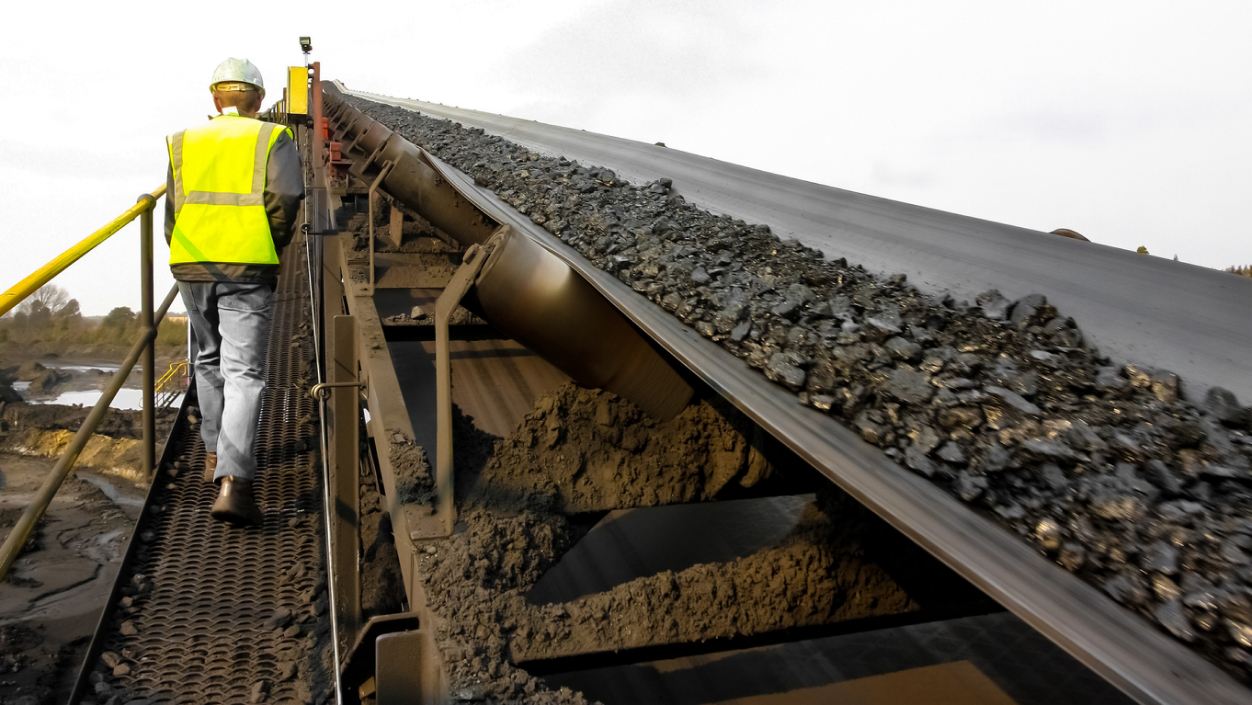
Asbestos Mining and Exposure
Asbestos was once considered a “miracle mineral” for its heat resistance and durability. This fibrous mineral has been mined because of these useful properties since early Greek civilization and is still mined in many parts of the world today.

How Are Asbestos Miners Exposed?
Asbestos miners were directly exposed to raw asbestos as they mined and transported the ore for processing. Miners were also exposed to asbestos products in mining machinery and equipment such as brake linings, gaskets and heat panels.
The tasks asbestos miners performed changed over the years as technology developed safer mining methods and techniques. In the early days of asbestos mining, miners used chisels, shovels, hammers and other tools to break apart asbestos-containing ore. These tasks generated a lot of asbestos dust, and ventilation was an issue before safety standards were implemented in the late 1800s.
Mining of asbestos peaked during the Industrial Revolution when it was regarded as the perfect insulator for newly emerging factories. The mineral was refined and incorporated into a number of building materials, fabrics and other products. Despite its seemingly desirable properties, it is a carcinogen, and mining asbestos puts miners at a high risk of developing related diseases.
Asbestos mining ended in the U.S. in 2002, but it continues in certain countries, including Russia, Kazakhstan and China. According to a 2021 article published in the Journal of Occupational Medicine and Toxicology, worldwide asbestos mining and consumption has stayed within the range of 1.3 million tons annually in recent years.
Modern mining methods involve fewer miners and rely more on technology and machinery to extract ore. While this resulted in fewer miners at asbestos mines, it did not eliminate the risk of asbestos exposure because miners were also exposed to asbestos parts while operating, maintaining and repairing machinery and equipment.
Asbestos Mines, Miners and Mesothelioma
Many studies have documented increased rates of asbestos-related diseases among asbestos miners, their family members and in members of the community surrounding asbestos mines.
According to a 2022 report by the European Commission, over 70,000 workers died in 2019 from past exposure to asbestos.
The occupations that are highest risk for asbestos exposure are usually blue collar workers or first responders, people that are dealing with unexpected events frequently. Even construction workers and people in industries such as engineering, deal with older materials and older items and objects that may have asbestos in them.

Risks to Miners
In a 2020 study published in the American Journal of Industrial Medicine, researchers reported excess deaths from asbestos-related diseases, including mesothelioma, among chrysotile asbestos miners in Italy. The study authors emphasized that the mine was not contaminated with other types of asbestos, such as tremolite, providing evidence that chrysotile causes all types of asbestos-related diseases.
In 2017, a study from Finland reported outcomes for 734 miners who had worked in asbestos mines between 1953 and 1967. Researchers found the asbestos miners’ lung cancer risk was more than double and their mesothelioma risk was more than 10 times higher than the general public.
Risks to Communities Near Mines
In 2017, researchers from the Agency for Toxic Substances and Disease Registry and the National Institute for Occupational Safety and Health published a study on the health effects of community exposure to asbestos-contaminated vermiculite from Libby, Montana, from 1979 to 2011. They reported excess cases of mesothelioma and asbestosis. They expected 1.79 cases of mesothelioma and found five, and they expected 0.58 cases of asbestosis and found 59 cases.
In 2002, the Agency for Toxic Substances and Disease Registry reported on asbestos-related disease mortality among residents of Libby, Montana, from 1979 to 1998, the years in which exposure was believed to be the highest. They found respiratory cancer deaths were 20 to 40 times higher and noncancerous respiratory deaths, especially asbestosis, were at least 40 times higher than expected.
In a 2000 study published in Current Opinion in Pulmonary Medicine, researchers reported cases of mesothelioma among people who lived near asbestos mines but never worked at the mine and never lived with anyone who worked at the mine. This data shows the negative health effects of asbestos mining on communities.
Asbestos exposure causes mesothelioma, lung cancer, ovarian cancer, laryngeal cancer and asbestosis. It is important to find a doctor specializing in your diagnosis to access innovative treatments and clinical trials. Treatments are available to help people live longer with these diseases.
Vermiculite, Talc, Taconite & Coal Miners
Miners of vermiculite, talc and taconite have been exposed to asbestos in contaminated deposits. Exposure was highest before asbestos regulations were implemented in the 1970s, but active vermiculite, talc and taconite mines in the U.S. remain contaminated with asbestos and pose an exposure threat to current miners. Coal miners have also developed asbestos-related diseases, and this is likely caused by asbestos products used in coal mining.
Vermiculite
Vermiculite is a mineral found in many parts of the world, and vermiculite deposits can contain many other minerals, including asbestos. One prominent vermiculite mine in Libby, Montana, was tainted with asbestos and became one of the largest environmental disasters in the U.S. The W.R. Grace vermiculite mine killed hundreds of miners while thousands of Libby residents were sickened by the toxic dust. The mine was designated a Superfund site by the U.S. Environmental Protection Agency in 2002.
In 2009, the agency administrator declared a public health emergency in Libby. This was the first time the agency had declared a public health emergency, which signaled to many public health officials the severity of the exposure risk in the town.
The EPA has decontaminated most of the town and now works with state and local authorities to manage lingering contaminated areas in and around Libby. It announced in 2018 the completion of a 3,000-site cleanup effort that included businesses, yards and parks throughout the area. By 2021, it had completed restoration efforts covering all roadways and major highways in and between Libby and nearby Troy.
Talc
Talc is the world’s softest mineral. It can form alongside asbestos, which has led to asbestos contaminating talc products, including talcum powder. Talc miners throughout the world have developed asbestos-related diseases working in talc mines. In 1980, the National Institute for Occupational Safety and Health reported excess deaths from mesothelioma, lung cancer and noncancerous lung disease in talc miners from New York-area talc mines known to contain asbestos.
Taconite
Taconite is a variety of iron that can naturally form alongside asbestos. Several taconite mines came under fire for the high prevalence of asbestos-related diseases in their workers. One such mine, the Iron Range in Minnesota, is noted for a mesothelioma incidence rate that is twice as high as the general population.
Coal
Coal is classified as an organic sedimentary rock made of decomposed plants. According to a 2005 report by the Mine Safety and Health Administration, around 15% of coal mines in the U.S. have exposed at least one miner to asbestos above the safety limit proposed by the administration.
Miners who develop asbestos-related diseases may be eligible to take legal action against the companies responsible for their asbestos exposure. Talk to a mesothelioma lawyer to learn more about your legal options to secure the compensation you may be entitled to.

Receive a legal guide overnight. Learn how to choose an attorney and access compensation.
Get Your Free GuideLegal Options for Miners Exposed to Asbestos
Asbestos miners and those who have developed asbestos-related illnesses from living near asbestos mines have successfully sued mine owners and manufacturers using asbestos in products to recover compensation to pay for medical costs.
- In 2020, a multimillion-dollar settlement was reached between the family of a miner who died of mesothelioma and asbestos defendants, including his employer and manufacturers of the asbestos products he used on the job. The lawsuit claimed he was exposed to asbestos brakes and gaskets when maintaining mining equipment.
- The family of a miner who died of mesothelioma filed a wrongful death lawsuit in 2018 against manufacturers of the asbestos products he was exposed to while working as a mine prospector in the 1970s. The lawsuit claims the deceased miner was exposed to asbestos brakes and gaskets on mining machinery and equipment. The outcome of this case is unpublished.
- In 2017, more than 1,000 residents and former miners from Libby, Montana, reached a $25 million settlement with the state of Montana for failing to protect the residents of the town from the dangers of the W.R. Grace asbestos-contaminated vermiculite mine.
- A Montana judge approved a $43 million settlement in 2011 between the state of Montana and 1,300 plaintiffs from Libby, Montana, for failing to warn the plaintiffs about the dangers of living near the asbestos-contaminated Libby mine.
- In September 2011, ironworker and coal miner Delbert Russell filed a personal injury lawsuit against 123 asbestos manufacturers claiming their asbestos products caused him to develop mesothelioma after 45 years of working as a miner. The outcome of the case is unpublished.
Asbestos miners and those who live near asbestos mines who develop asbestos-related diseases may be eligible to file legal claims to access compensation to cover medical bills, lost wages and other damages resulting from the disease. Personal injury lawsuits may be filed by those who get sick, and family members who lose a loved one may file a wrongful death lawsuit.
Asbestos trust fund claims may also be an option for patients and their loved ones. There is approximately $30 billion in asbestos trust funds to help victims who develop mesothelioma and other diseases. It is smart to work with a mesothelioma lawyer who has vast experience and a track record of success. They can help to secure the most compensation for your claim to help your family financially recover.
Currently Active Asbestos Mines
While currently active mines are found abroad, U.S.-based contractors often work overseas via multinational companies and international recruitment of experienced miners. American workers can face significant exposure and health risks as a result.
The U.S. Geological Survey reports on world mine production of asbestos, and it reported that global production of asbestos totaled 1.2 million metric tons in 2020 (down from 2.3 million metric tons in 2006). The world’s biggest producers in order of asbestos production include Russia, Kazakhstan, China, Brazil and Zimbabwe. Russia produced 790,000 metric tons of asbestos in 2020 and Kazakhstan produced 210,000 metric tons.
There’s very little question that Brian was exposed to asbestos when he was in Wittenoom with his family, in Western Australia, the mining town. He traveled there with his parents, and they lived in the town for seven short months. They played as children in the yard that was completely covered in asbestos dust, as was the town.
Currently, active mines in these countries are not making major efforts to protect miners from the health effects of asbestos. According to a New York Times article published in 2019, residents in the town of Asbest, Russia, have increased rates of lung cancer from living near Russia’s largest asbestos mine.
According to the U.S. Geological Survey, asbestos mines in Brazil and Russia supplied the vast majority of asbestos fiber imports to the U.S. between 2016 and 2020. These imports are primarily used by the chloralkali industry to produce chlorine with asbestos diaphragms.
The Geological Survey reports a small amount of asbestos is imported through products. These include brake blocks used in the oil industry, rubber sheets for gaskets used to create a chemical-containment seal to produce titanium dioxide, certain other types of preformed gaskets and some vehicle friction products aside from brakes.
Asbestos Mining in North America
Before asbestos mining came to the United States, it was already commonplace in Canada. Quebec was a large mining area, although mines operated in cities throughout Canada. At one point, Canada had several dozen mines in operation and was the largest exporter of asbestos to the U.S. and many other countries. Canada’s last asbestos mine closed in 2012, and the country passed a nationwide ban on asbestos in 2018.
2002
Year asbestos mining ended in the United States.
U.S. asbestos mining peaked around 1973, a few years before the federal government issued warnings about the mineral and began to regulate its use. Unfortunately for most of the miners, many were already exposed, and the restrictions came much too late.
Asbestos mining in the U.S. began just before the turn of the 20th century. The first mine opened in the Sall Mountain area of Georgia. Eventually, about 60 mines operated in the eastern U.S., while many others were thriving in California, Oregon and Washington.
The last operation to close on the East Coast was the Lowell chrysotile quarry in Vermont, which ceased operations in 1993. The King City Asbestos Company mine in the Coalinga asbestos district of San Benito and Fresno counties in California was the last asbestos operation in the U.S., closing in the early 2000s.

Get help paying for treatment and other expenses by accessing trust funds, grants and other options.
Access Funds NowAsbestos Products Associated With Mining
In addition to direct exposure to raw asbestos ore and fibers, asbestos miners were exposed to asbestos products in machinery and equipment.
- Brakes and Clutches: Asbestos brake linings and clutch facings were commonly found on mining machinery. Workers who replaced these parts endured high levels of asbestos exposure.
- Gaskets: Asbestos gaskets were common on machines and equipment that generated heat. Anyone who cut or replaced these gaskets was at risk of exposure.
- Fireproof Blankets: Welding and fireproof blankets were commonly made with asbestos until the 1980s. These blankets were used by miners to protect them from heat and sparks generated by mining equipment. Over time these blankets broke down and released asbestos fibers.
- Pipe Insulation: Pipes in mine tunnels were often wrapped with asbestos wrap insulation. Any time this material was disturbed, ripped or damaged, it could release microscopic asbestos fibers into the tunnel.
- Transite Panels: Transite panels containing asbestos were used in mines because they were durable and resistant to heat. If these panels were damaged, they could release asbestos fibers.
Workers who maintained asbestos-containing equipment experienced direct exposure to toxic fibers. Replacing and repairing asbestos parts led to the release of toxic fibers. This equipment was often located in poorly ventilated areas, which increased the risk of asbestos exposure.
Recommended Reading







